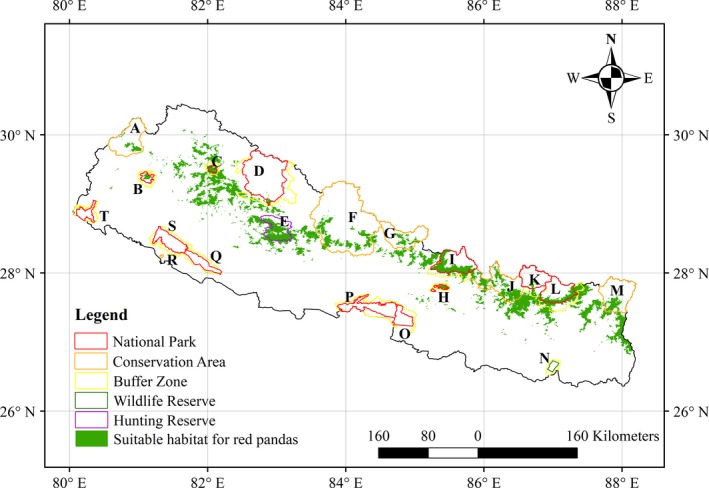Figure 4.

Predicted suitable habitat for red pandas based on the inputs of both environmental and anthropogenic variables; A: Api Nampa Conservation Area, B: Khaptad National Park and its Buffer Zone, C: Rara National Park and its Buffer Zone; D: Shey Phoksundo National Park and its Buffer Zone; E: Dhorpatan Hunting Reserve; F: Annapurna Conservation Area; G: Manaslu Conservation Area; H: Shivapuri Nagarjun National Park and its Buffer Zone; I: Langtang National Park and its Buffer; J: Gaurishankar Conservation Area; K: Sagarmatha National Park and its Buffer Zone; L:Makalu Barun National Park and its Buffer Zone; M: Kanchenjunga Conservation Area; N: Koshi Tappu Wildlife Reserve and its Buffer Zone; O: Parsa National Park and its Buffer Zone; P: Chitwan National Park and its Buffer Zone; Q: Banke National Park and its Buffer Zone; R: Krishnasar Conservation Area, S: Bardia National Park and its Buffer Zone; T: Shuklaphanta National Park and its Buffer Zone (source of shape file of protected areas: UNEP‐WCMC & IUCN, 2017) and boundary of Nepal (Bjørn, 2009)
